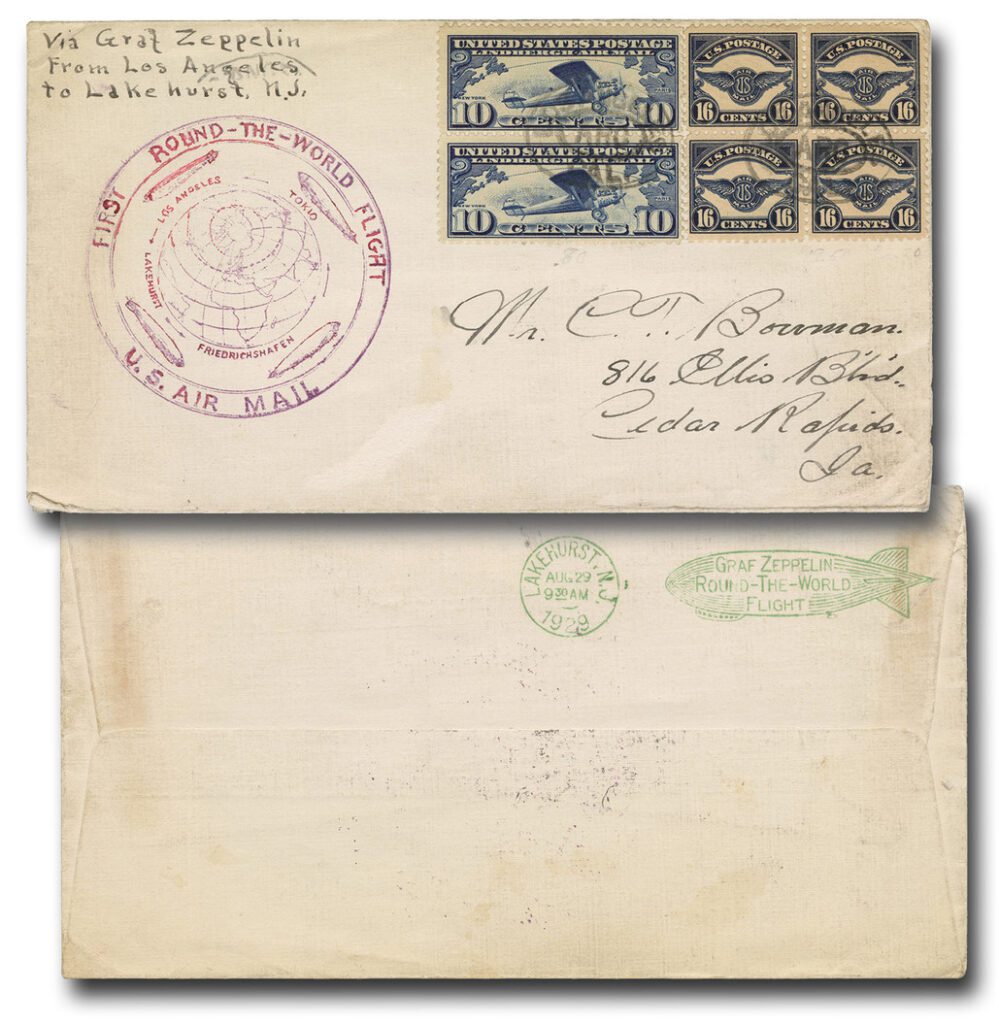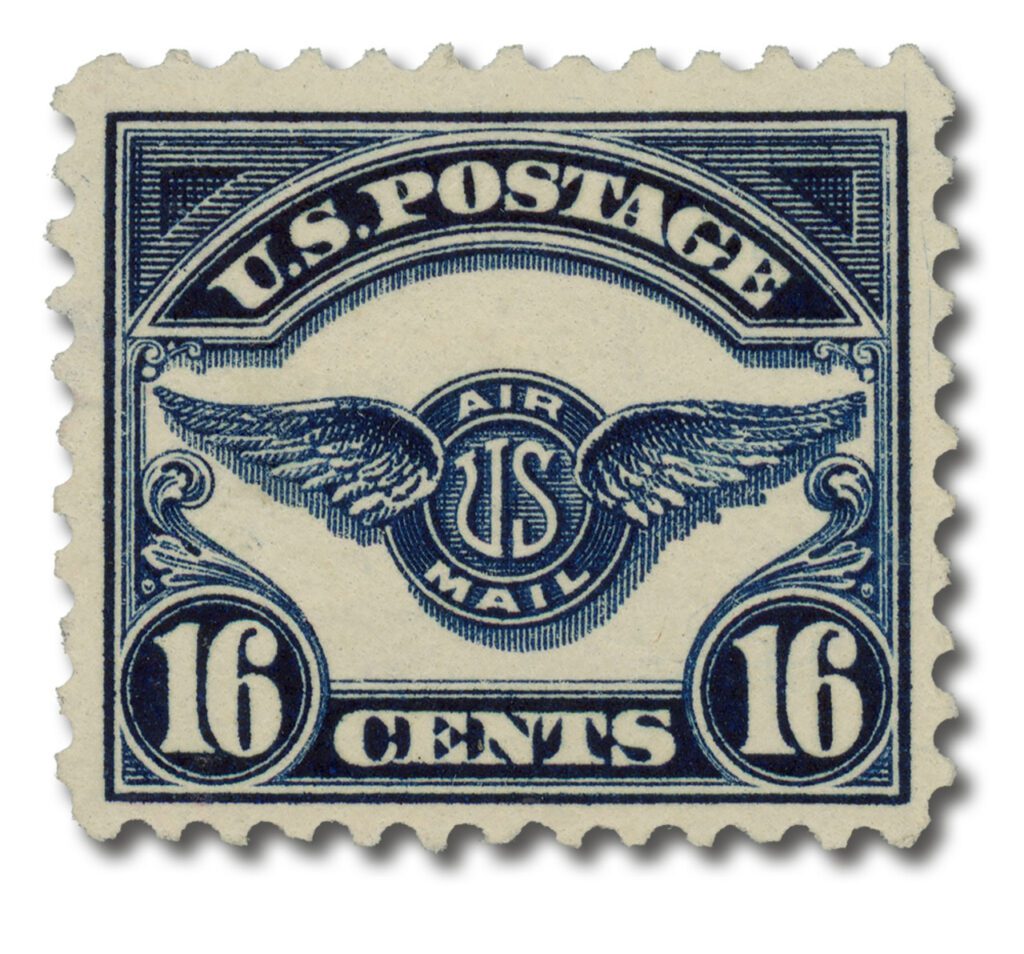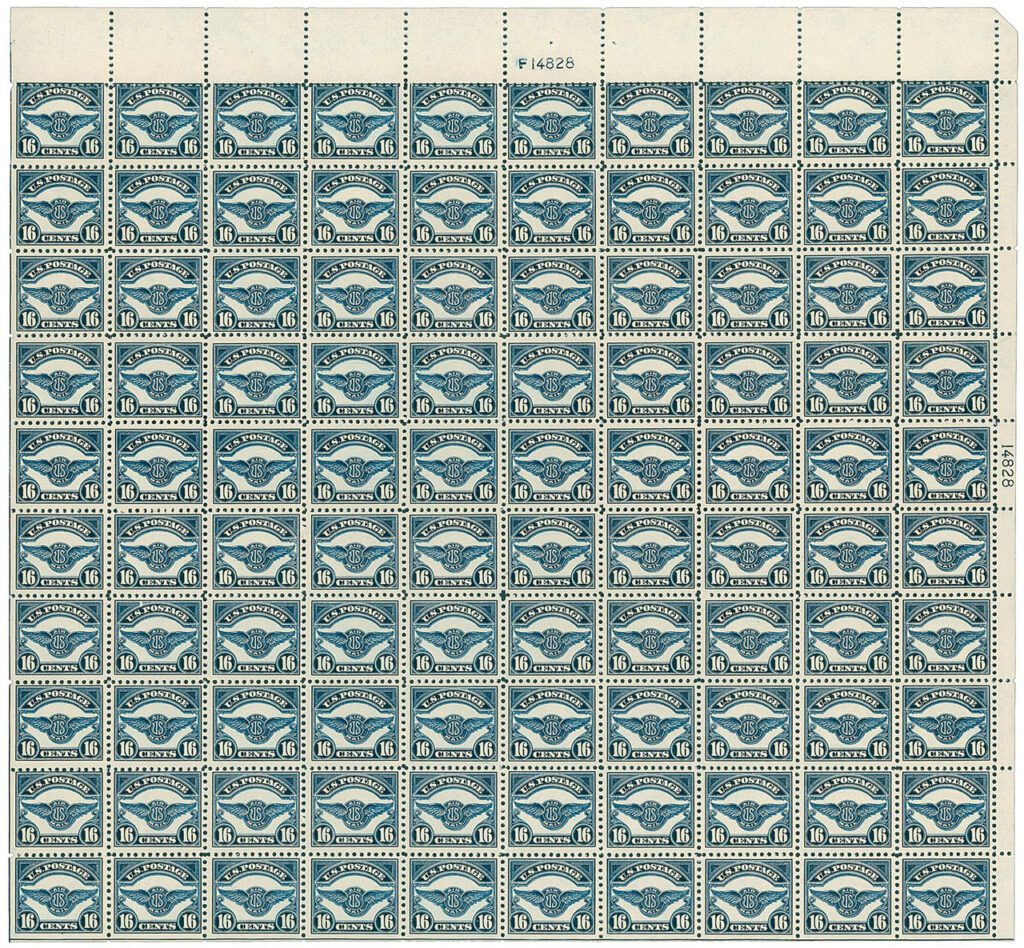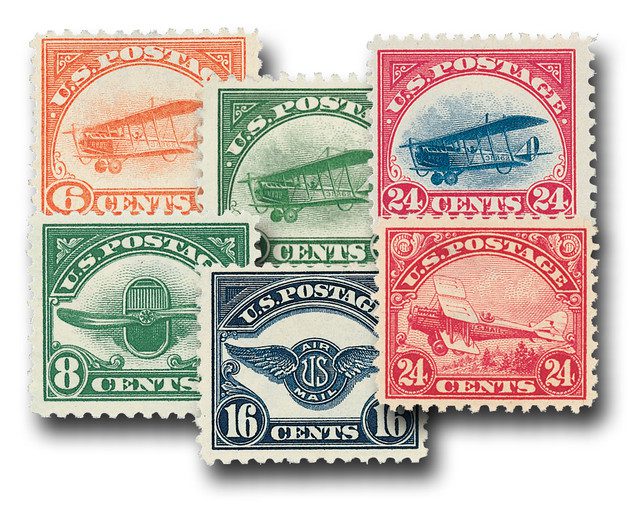On August 17, 1923, the US Post Office issued its fifth Airmail stamp, #C5. Picturing the Air Service emblem, it was also the first US stamp to include the words “Air Mail” in its design.
During the design phase of the Air Service Emblem stamp, black ink was chosen for the stamp’s color. When the design was approved on August 6, 1923, the color was changed to deep blue. The stamp pictures the official emblem of the Airmail Service. A central circle is surrounded by spread wings. The image was created by C. A. Huston, who also designed the first Airmail stamps featuring the Curtiss Jenny airplane. Stamp #C5 was printed by the Bureau of Engraving and Printing and was issued on August 17.
The 16¢ rate covered the charge for a letter weighing one ounce or less and traveling across two zones of the transcontinental airmail route. At the time, the country was divided into three zones, so the letter could have flown from New York to Cheyenne, Wyoming or Chicago to San Francisco.

Many obstacles had to be overcome to establish an efficient transcontinental service. By 1920, airmail service was offered from New York to San Francisco, but night flying was impossible. That meant, mailbags were taken from the planes at night, put on mail trains to travel through the night, then placed on a waiting plane to continue the journey. This method of airmail service saved less than two days over traveling exclusively by train.
To get funding from Congress, the Post Office Department had to figure out a way to fly at night to increase the speed of airmail delivery. The solution was a series of beacons extending across the nation. Concrete arrows painted yellow were built every ten miles to show the route during the day. Steel towers were constructed at each arrow and held a rotating beacon that lit the way at night. In addition, landing fields were lit up for emergency landings. The around-the-clock flights reduced the airmail delivery time enough to convince Congress to fund the service.
By 1924, the markers stretched from Wyoming to Ohio, then all the way to New York by the following year. In 1927, the line of arrows and beacons reached from one shore to the other, marking the way for airmail pilots flying day and night.
Advances in technology led to radios in the aircraft, then radar. By the 1940s, the yellow markers and beacons were no longer necessary to guide the pilots across the country. The steel towers holding the beacons were taken down and went toward the war effort. The yellow paint faded with neglect, and the concrete developed cracks. Some of those arrows remain in forgotten fields of the open West.
| FREE printable This Day in History album pages Download a PDF of today’s article. Get a binder or other supplies to create your This Day in History album. |
Discover what else happened on This Day in History.







The PBS series “Mysteries from Above” had a segment on the yellow markers and beacons in the West.